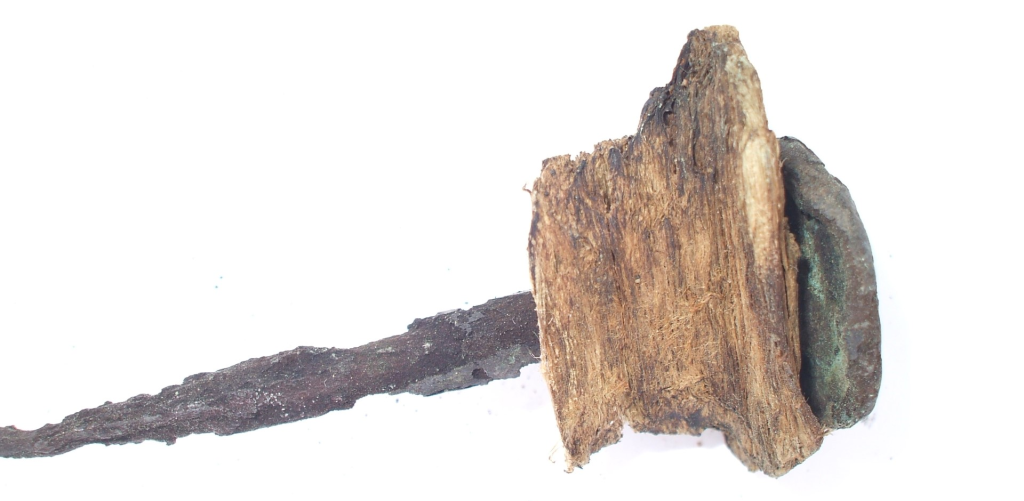At a recent conference held in Alba Iulia, Romania, Professor Michael Vickers, an Emeritus Fellow and former Senior Research Fellow in Classical Studies at Jesus College, reported the discovery of traces of silk in a 5th century BC cemetery at Pichvnari, Georgia. The traces were found on a bronze nail from a grave in the cemetery.
The 5th century BC is remarkably early for silk in the Mediterranean area, and is evidence for long-distance contact with the Far East centuries before the period when regular development of the silk routes is generally considered to have occurred. It was previously thought that some organic remains found in a late 5th century BC context in the Kerameikos cemetery in Athens were silk, but more recent analysis has shown that this is not the case. Pichvnari has produced the earliest known silk in the Classical world.

Traces of silk fibres were found on a bronze nail from a grave of the fifth century BC at Pichvnari in Georgia.
The site was excavated by Michael, former Curator of Greek and Roman Antiquities at the Ashmolean Museum, and Amiran Kakhidze of the Batumi Archaeological Museum, both co-directors of the joint British-Georgian Pichvnari Expedition 1998-2010.
Michael says, “Recent analysis of textile remains by Eliso Kvavadze and Maia Chichinadze of the Georgian National Museum has revealed a great quantity of silk fibres and other textile fibres of flax, cotton and wool which, together with particles of different colours of dye, give the strong impression that the deceased were buried wearing beautifully woven clothing. We might even speculate that women especially wore woven silk dresses”.*
*Eliso Kvavadze and Maia Chichinadze, ‘Palynological analysis of organic materials from Pichvnari (including the earliest silk in Georgia)’ in Wonders Lost and Found. A celebration of the archaeological work of Professor Michael Vickers edited by Nicholas Sekunda, Oxford, Archaeopress 2020, 102-107.
